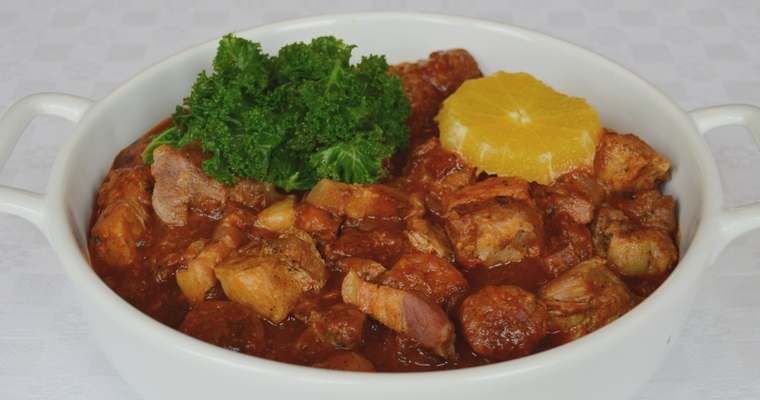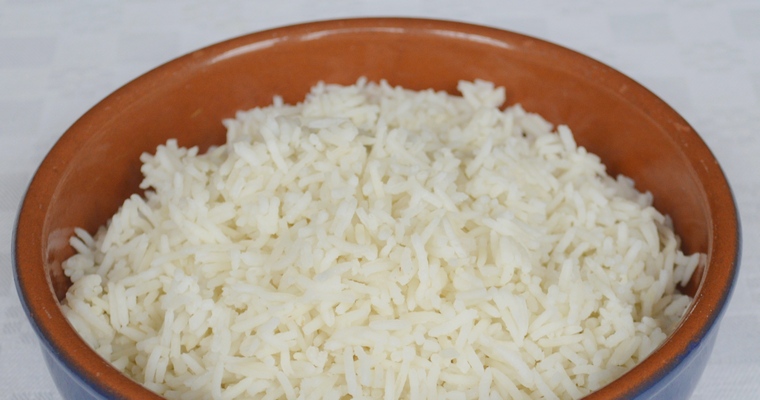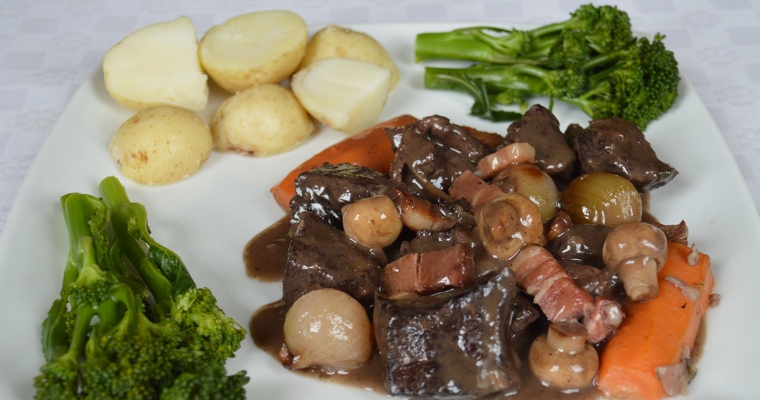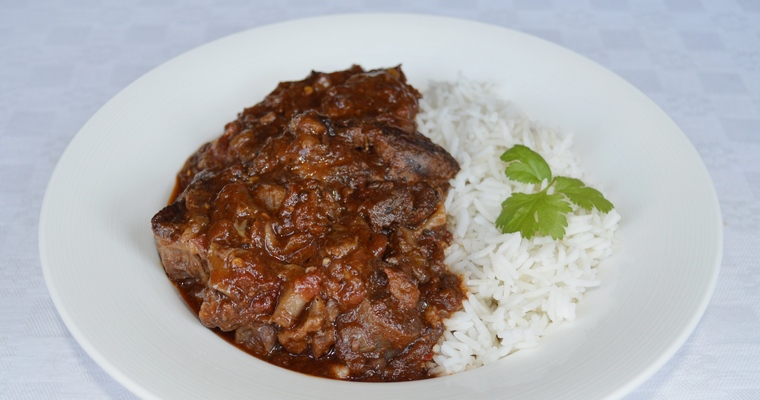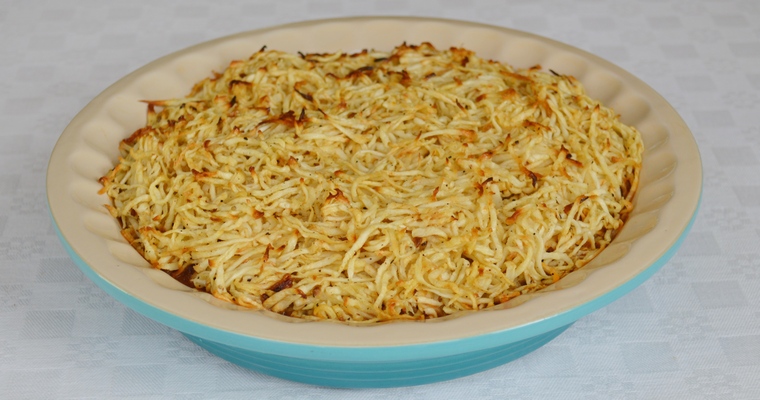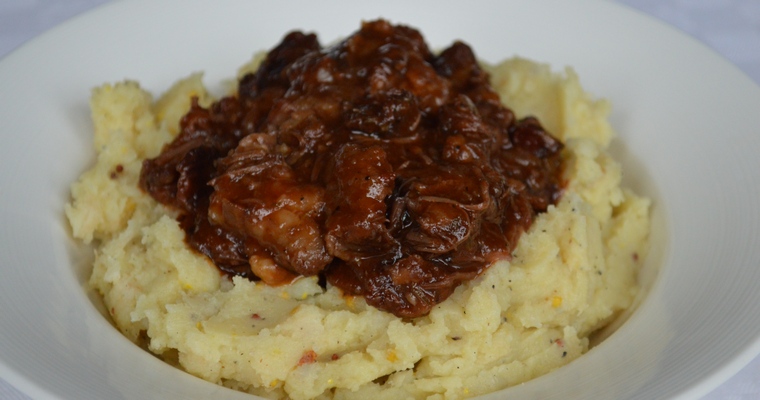Pork neck, pork belly, trotters, pancetta and chorizo are slow-cooked for a rich, hearty stew. This Paleo version of Brazilian Feijoada does not have beans.
Authentic Feijoada (fey-jwah-duh) is a rich and hearty pork and bean stew, for which minimal seasoning is required. Although it is considered the national dish of Brazil, it actually originated in Portugal, being transported to Brazil when it was a colony of the Portuguese empire. It is made from an assortment of cuts, with the exact mixture varying from cook to cook. Generally there will be a good mix of fresh meat like ribs, shoulder and belly, cured meat like sausages and bacon, and cheap trimmings like ears, feet and tail. The trimmings are fished out before serving, as they contain very little edible meat, being comprised largely of gristle. Instead, their role is to enrich and thicken the cooking liquid. As they cook down, the connective tissue gets broken down into gelatine and released into the cooking liquid. When cooled, this enriched stock will set like jelly.
A pound of dried black beans which have been soaked overnight is normally cooked up with the meat. This gives the stew an inviting dark purple-brown colour, and also results in a thriftier dish. Some regions use red beans like pinto beans or kidney beans, while other regions use white beans. As beans are complex carbohydrates that are difficult to digest, this recipe does not include beans. If you want to vary the texture and eke out the meat content, you can dice some starchy vegetables like carrots or sweet potato, and add these to the pot for the final 30 minutes or so of cooking. Personally, I think this is unnecessary. I am not a fan of mixing vegetables into slow-cooked stews, as they are generally overpowered by the meat, and rendered into tasteless and unidentifiable lumps.
On one point everyone agrees, and that is on is the necessity of serving Feijoada with a side of collard greens and orange slices. These provide refreshing interludes throughout the meal, cutting through the fatty and salty meat. The idea is to eat a couple of forkfuls of the stew, then take a break with a forkful of bitter green or sweet and sour orange.
Ingredients
meat ingredients:
- 180g fresh chorizo, sliced into rounds
- 180g pancetta, sliced into long, thin strips (replace with thick bacon if you cannot find – preferably slab bacon, but smoked streaky bacon is okay)
- 450g pork neck fillet, cut into 4cm pieces
- 450g pork belly, cut into 4 cm pieces
- 1 pig trotter, cut up or bashed about with a meat cleaver by your butcher (optional)
- 1 teaspoon salt
- 1/2 teaspoon freshly ground black pepper
seasoning ingredients:
- 1 onion (130g), peeled and finely diced
- 4 garlic cloves, peeled and minced
- 1 teaspoon dried oregano
- 1/2 teaspoon dried thyme
- 2 whole bay leaves
liquid ingredients:
- 2 tablespoons red wine vinegar
- 200g (1/2 can) tinned chopped tomatoes
- 1 1/4 pints (710ml) cold water
to serve:
- 2-3 oranges
- 160g kale, thick stems discarded and leaves shredded
Instructions
- Brown the meat. Remove the meat from the refrigerator 30 minutes before cooking, so it has time to come up to room temperature. Mix the salt and pepper in a large bowl. Rub the pork neck fillet and belly all over with the seasoning in the bowl.
- Heat a heavy-based casserole over a medium-low heat. Add the chorizo, and cook gently until the fat renders out and greases the casserole (you shouldn’t need to add any cooking oil). Increase the heat to medium, and cook until browned on both sides – about 4-5 minutes in total. Remove with a slotted spoon and transfer to a small bowl. Add the pancetta and fry for 5-6 minutes, until crispy. Transfer to the same bowl, and set aside until needed.
- Sear the pork neck fillet, belly and trotter in batches until browned all over with a caramelised crust – about 3-4 minutes. Do not overcrowd the pan, as this will cause the meat to stew rather than brown. Add some cooking oil if required. Transfer the browned meat back to the large bowl.
- Fry the onion & aromatics. Reduce the heat to medium. Add the onion and fry until the onion is translucent but not brown, stirring occasionally – about 5 minutes. Add the garlic fry for another 2 minutes. Add the dried herbs (oregano, thyme and bay leaves), and fry for 1 minute.
- Deglaze the pan. Add the red wine vinegar and scrape off any browned bits from the bottom of the pan with a spatula. Cook until all the vinegar evaporates – about 2 minutes.
- Simmer the stew. Add the tinned tomatoes and water. Stir until blended, then return the pork neck fillet, belly and trotter to the casserole. The pork should be more-or-less submerged in liquid. Top up with a bit of extra water if this is not the case. Bring to the boil, then reduce the heat to low. Cover, and leave to simmer gently for 1 hour. Add the chorizo and pancetta. Uncover, and cook for 1 hour more.
- Traditionally, stews are made the day before they are to be eaten. This improves the flavour by allowing the spices to develop and meld together.
- If eating another day: leave to cool overnight in the refrigerator. After several hours chilling, the fat will rise to the top and congeal to form a solid layer on top. When you want to eat the stew, gently scrape off the fat with a metal spoon and discard. Bring to the boil, then follow the instructions below to reduce the sauce.
- if eating straight away: take the pan off the heat, and remove the meat using a slotted spoon. Wait for the oil to separate out and rise to the top. Tilt the pan, then lower in a metal spoon or ladle and scoop up the oil from the sides.
- Reduce the sauce. Remove the meat from the pan using a slotted spoon, discarding the trotter. Keep warm by covering in a double layer of tin foil. Turn the heat up to high and boil rapidly to reduce the cooking liquid to a thick sauce – about 20 minutes. Stir frequently towards the end to stop it from sticking to the bottom of the pan. Return the pork to the casserole, and mix until evenly coated in sauce. Cook for another 5 minutes to ensure the meat is piping hot.
- Prepare the kale and orange. Meanwhile, place the shredded kale in a steaming pan over a medium heat, and steam for 4-5 minutes, until tender. Tip into a colander and leave to steam dry for 2 minutes.
- Cut off the top and bottom of the oranges, deep enough to leave a round of flesh at either end. Stand upright. Cut away the skin and pith, cutting downwards and following the contours of the orange. Slice into rounds.
- Transfer the stew into a serving dish and serve hot, with side dishes of kale and orange.

